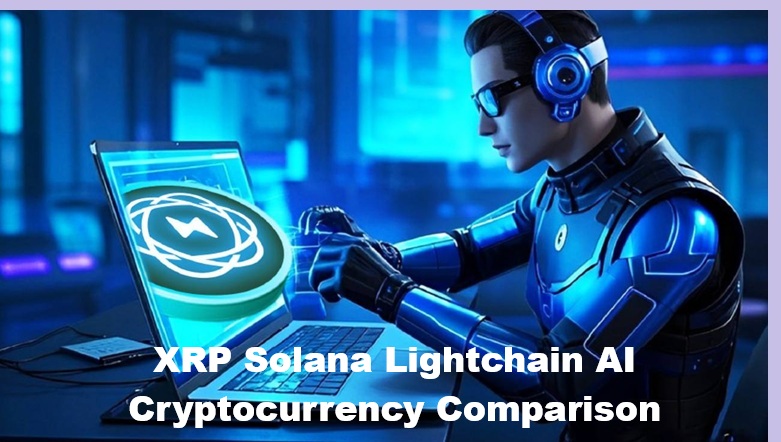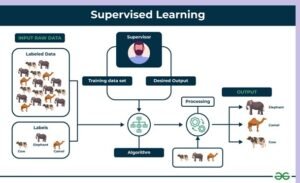XRP Solana Lightchain AI Cryptocurrency Comparison: The Ultimate 2025 Guide

XRP Solana Lightchain AI Cryptocurrency Comparison
The world of digital assets is moving fast. New platforms emerge, and existing networks evolve to serve an increasingly large number of users, businesses, and developers. In this article, we dive into an in-depth XRP Solana Lightchain AI cryptocurrency comparison, looking at how these three networks differ in technology, speed, cost, and investment potential. Whether you are a trader, developer, or simply curious, this guide will give you a clear, human-friendly overview of all three projects.
Introduction to the Cryptocurrencies
Before we do a detailed XRP Solana Lightchain AI cryptocurrency comparison, it’s worth understanding what each of these cryptocurrencies is about.
What is XRP?
- Launch year: 2012
- Purpose: Cross-border payments, remittances, and liquidity for banks.
- Consensus: Ripple Protocol Consensus Algorithm (RPCA).
- Key advantage: Very low transaction cost and high reliability.
XRP was designed to help financial institutions move money across borders faster and cheaper than traditional systems like SWIFT. It is not mined; instead, the tokens were pre-minted and gradually released.
What is Solana?
- Launch year: 2020
- Purpose: High-speed decentralized applications (dApps), DeFi, and NFTs.
- Consensus: Proof-of-History combined with Proof-of-Stake.
- Key advantage: Extremely high throughput (~65,000 TPS) at low cost.
Solana is famous for its lightning-fast transactions and low fees, making it a go-to network for developers building decentralized exchanges, NFT marketplaces, and gaming platforms.
What is Lightchain AI?
- Launch year: 2024 (emerging network).
- Purpose: AI-driven smart contracts, scalable DeFi, and predictive blockchain infrastructure.
- Consensus: AI-Powered Proof-of-Stake.
- Key advantage: Integrates artificial intelligence to optimize performance, predict congestion, and reduce fees.
Lightchain AI is a newcomer but draws attention due to its integration of artificial intelligence into blockchain consensus, promising faster speeds and smarter contracts.
XRP Solana Lightchain AI Cryptocurrency Comparison Table
| Feature | XRP | Solana | Lightchain AI |
|---|---|---|---|
| Launch Year | 2012 | 2020 | 2024 |
| Consensus Mechanism | Ripple Protocol | Proof-of-History + Proof-of-Stake | AI-Powered Proof-of-Stake |
| Speed (Transactions/Second) | ~1,500 TPS | ~65,000 TPS | ~80,000 TPS (projected) |
| Average Fee per Transaction | < $0.01 | < $0.01 | Ultra-low (AI optimized) |
| Main Use Case | Cross-border payments | dApps, DeFi, NFTs | AI-driven smart contracts & DeFi |
| Developer Ecosystem | Moderate but banking focused | Very large, active community | Growing, AI and fintech developers |
| Token Supply | 100 billion (pre-minted) | Inflationary but capped yearly | TBD (still in beta stage) |
| Smart Contract Support | Limited | Extensive | Extensive with AI features |
This table gives a clear snapshot of how these three cryptocurrencies compare on core metrics. In our XRP Solana Light chain AI cryptocurrency comparison, light chain AI looks futuristic but is still new, while Solana and XRP are established in their niches.
Deep Dive: Technology and Speed
XRP’s Strength in Financial Transactions
XRP’s architecture allows near-instant settlement of cross-border payments, making it a favourite among banks and remittance providers. It isn’t trying to be a smart contract platform like Solana or Light chain AI; instead, it focuses on reliability and compliance with regulators.
Solana’s High-Throughput Approach
Solana uses a novel Proof-of-History mechanism to timestamp transactions before they enter the blockchain. This reduces bottlenecks and allows high throughput, which is crucial for DeFi and NFT projects. In the XRP Solana Lighting Chain AI cryptocurrency comparison, Solana leads in terms of mainstream developer adoption.
Lightchain AI’s AI-Enhanced Consensus
Light chain AI’s AI-Powered Proof-of-Stake attempts to anticipate network congestion and reroute transactions before bottlenecks form. This approach could deliver even greater throughput than Solana. However, as a new entrant, its performance is mostly projected rather than proven.
Use Cases: Where They Shine
- XRP: Banks, remittance companies, and fintech startups needing fast and cheap cross-border transfers.
- Solana: Developers creating decentralized exchanges, NFT marketplaces, games, and DeFi apps.
- Lightchain AI: Projects requiring AI-powered predictive analytics, advanced smart contracts, or large-scale DeFi platforms.
This XRP Solana Lightchain AI cryptocurrency comparison shows that each network serves different audiences: traditional finance (XRP), cutting-edge DeFi (Solana), and AI-enhanced blockchain solutions (Lightchain AI).
Security and Decentralization
- XRP: Uses a network of trusted validators; more centralized than Bitcoin or Ethereum but stable.
- Solana: More decentralized than XRP but has experienced outages.
- Lightchain AI: Claims to use AI to monitor security threats; decentralization level still unclear.
Security remains a crucial factor in this XRP Solana Lightchain AI cryptocurrency comparison. Solana and Lightchain AI are more open to developers, whereas XRP prioritizes financial institutions.
Investment Potential in 2025
No article on XRP Solana Lightchain AI cryptocurrency comparison would be complete without touching on investment potential.
- XRP: Regulatory clarity in the US and other regions could boost adoption by banks.
- Solana: High-speed DeFi and NFT growth may push demand higher, but investors should watch for network stability.
- Lightchain AI: High-risk, high-reward play. If AI integration works, it could outpace both XRP and Solana in specific use cases.
Remember: this is not financial advice. Do your own research before investing.
Pros & Cons of Each Cryptocurrency
XRP Pros
- Ultra-low fees.
- Fast settlements.
- Banking partnerships.
XRP Cons
- Limited smart contract capability.
- Perceived centralization.
Solana Pros
- Extremely high throughput.
- Active developer ecosystem.
- Low fees.
Solana Cons
- Occasional network outages.
- Inflationary token model.
Lightchain AI Pros
- AI-powered performance optimization.
- Potentially highest throughput.
- Designed for next-generation DeFi.
Lightchain AI Cons
- Very new, unproven network.
- Tokenomics not fully transparent.
Future Outlook
In the XRP Solana Lightchain AI cryptocurrency comparison, we see three stages of blockchain evolution:
- XRP represents the bridge between traditional finance and crypto.
- Solana embodies the high-speed decentralized application era.
- Lightchain AI may represent the future, where AI optimizes blockchain processes.
If Lightchain AI delivers on its promises, it could change how blockchains scale and process transactions.
FAQs on XRP Solana Lightchain AI Cryptocurrency Comparison
Q.1. Which is faster: XRP, Solana, or Lightchain AI?
Ans. Solana is currently the fastest mainstream chain (~65,000 TPS), but Lightchain AI is projected to exceed 80,000 TPS.
Q.2. Is XRP better than Solana for developers?
Ans. No. XRP is tailored to payments and banks. Solana is better for developers building apps, DeFi, or NFTs.
Q.3. What makes Lightchain AI different?
Ans. It integrates artificial intelligence into its consensus mechanism to predict congestion and optimize fees.
Q.4. Is Lightchain AI already live?
Ans. Yes, but in early stages. Many features are still in beta and unproven at scale.
Q.5. Can these cryptocurrencies coexist?
Ans. Absolutely. Each has a unique niche. XRP focuses on payments, Solana on apps, and Lightchain AI on AI-driven smart contracts.
Conclusion
This XRP Solana Lightchain AI cryptocurrency comparison highlights how each project carves out its niche:
- XRP is the veteran of fast, low-cost cross-border payments.
- Solana is the high-speed backbone of decentralized finance and NFTs.
- Lightchain AI is the bold newcomer promising AI-optimized smart contracts and scalability.
Choosing between them depends on your goals: are you a bank, a developer, or an early adopter of AI-powered blockchain? Regardless, understanding their differences helps you make informed decisions in the rapidly evolving crypto space.
Read More:-








1 thought on “XRP Solana Lightchain AI Cryptocurrency Comparison: The Ultimate 2025 Guide”